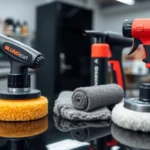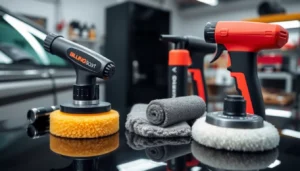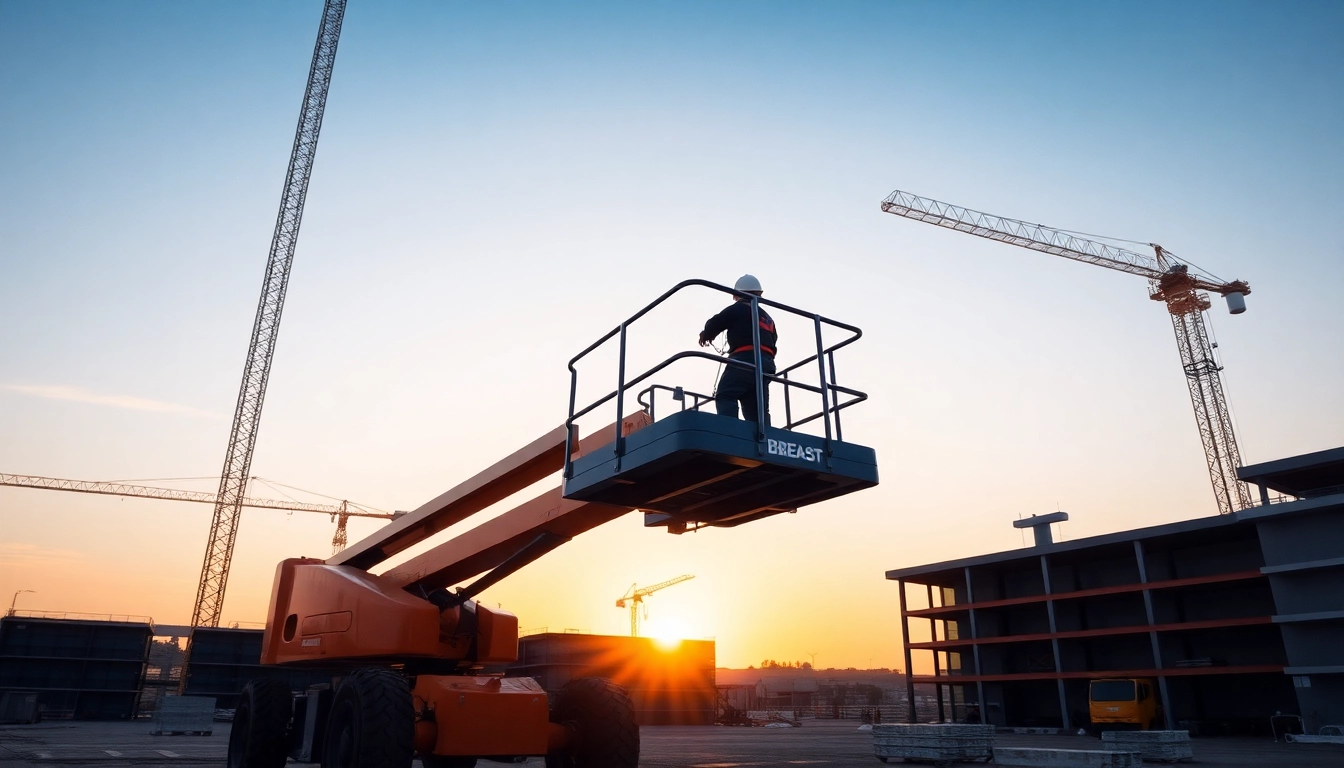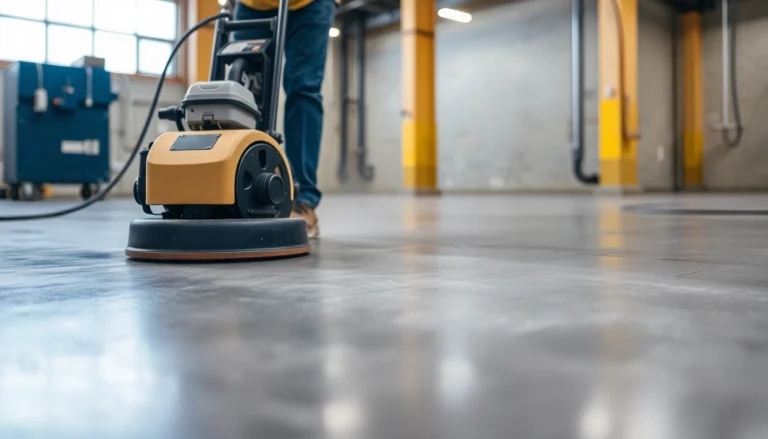Understanding Boom Lift Rental: Key Benefits and Use Cases
In the dynamic world of construction, maintenance, and industrial operations, access to the correct equipment can make or break a project’s success. Among the most versatile and reliable pieces of access machinery is the boom lift. Whether you’re working indoors, outdoors, at great heights, or in tight spaces, a boom lift provides a safe, efficient, and flexible solution for elevated work. For many businesses, especially those aiming to control costs and optimize project flow, opting for boom lift rental presents an economical and practical choice compared to purchasing equipment outright.
This extensive guide explores the core aspects of boom lift rental, delves into the practical reasons for choosing rental over ownership, and provides comprehensive insights to help you select, operate, and optimize your use of boom lifts for various projects. Understanding these elements empowers contractors, facility managers, and DIY enthusiasts alike to make informed decisions that enhance safety, productivity, and cost-efficiency.
Why Choose a Boom Lift Rental over Buying
Cost-Effectiveness and Financial Flexibility
Acquiring a boom lift involves a significant capital investment. High-quality models, capable of reaching substantial heights and with advanced features, can cost tens of thousands of pounds or more. Additionally, ownership entails ongoing expenses such as maintenance, storage, insurance, and eventual replacement. Rental, on the other hand, converts large capital expenditure into manageable operational costs, often with flexible leasing terms. This approach allows businesses to access state-of-the-art equipment without the burden of ownership costs, ensuring they can allocate resources more strategically.
Access to the Latest Technology and Equipment
The aerial lift industry is constantly innovating, with new safety features, energy-efficient drives, and enhanced operational capabilities. Rental companies regularly update their fleets, providing access to the latest models with superior performance and safety standards. Renting ensures your team benefits from advanced technology that reduces operational risks and improves efficiency, without the need for costly upgrades or maintenance of outdated machinery.
Reduced Maintenance and Storage Responsibilities
Ownership comes with the challenge of regular maintenance, periodic inspections, and proper storage—all of which require time, expertise, and additional costs. Rental providers assume these responsibilities, delivering ready-to-use equipment that’s inspected, maintained, and tested before delivery. This not only guarantees safety but also minimizes downtime and operational disruptions.
Flexibility for Project-Specific Needs
Different projects demand different equipment specifications. Rental offers the flexibility to select the ideal boom lift type, reach height, and features for each unique task. You can switch between models, adjust rental durations, or upgrade to higher-capacity lifts as your project evolves, ensuring optimal performance for every phase without being tied to a single piece of equipment.
Common Applications for Boom Lift Rentals
Construction and Building Maintenance
From installing windows at high elevations to façade repairs, boom lifts are essential for reaching difficult areas safely. They enable workers to perform tasks at heights with precision and minimal risk, streamlining construction workflows and reducing reliance on scaffolding or ladders.
Industrial Facility Operations
Facility managers utilize boom lifts for maintenance of lighting fixtures, HVAC systems, and electrical wiring. They also facilitate inventory management in warehouses, allowing safe access to towering storage racks.
Tree Care and Landscaping
Arborists and landscapers depend on boom lifts for pruning, trimming, and removing tall trees without damaging surrounding vegetation or structures. Their maneuverability in tight spaces makes them ideal for urban landscaping projects.
Event Setup and Promotional Activities
Event organizers leverage boom lifts to set up lighting, sound systems, and banners at elevated positions, especially in large outdoor venues. Their quick deployment accelerates setup times and enhances safety in dynamic environments.
Film and Media Production
Camera operators and production crews utilize boom lifts to capture stunning high-angle shots, providing a stable platform for filming in outdoor and indoor locations.
Types of Boom Lifts Suitable for Different Projects
Articulating Boom Lifts
Featuring multiple jointed sections, articulating boom lifts excel at navigating tight spaces and reaching awkward vantage points. Their versatility allows for precise positioning in complex environments, making them ideal for building maintenance, electrical work, and architectural projects.
Vertical Mast Boom Lifts
With a compact design and straightforward vertical lift capabilities, mast lifts are suitable for indoor tasks, such as installing ceiling fixtures or servicing equipment in confined areas. They generally offer lower maximum heights but are valued for their maneuverability within small footprints.
Telescopic Boom Lifts
Known for their straight boom arms, telescopic lifts provide impressive outreach and maximum height capabilities, suitable for construction, crane-assisted tasks, and large-scale industrial applications where maximum reach is essential.
Hybrid and Bi-Energy Boom Lifts
Combining electric and fuel power, these lifts offer environmentally friendly operation with high performance, suitable for both indoor and outdoor projects, especially where emissions and noise are concerns.
How to Select the Right Boom Lift for Your Needs
Assessing Working Height and Reach Requirements
Begin by defining the maximum height and reach your project demands. Calculate not only the height the lift must achieve but also the outreach needed horizontally. Consider obstacles, overhead obstructions, and the terrain to determine the optimal boom length and articulation capabilities.
For instance, a building façade project might require a lift capable of reaching 20 meters, with enough articulation to maneuver around architectural features. Accurate assessment ensures you select a lift that provides sufficient coverage without unnecessary excess, saving costs and improving safety.
Choosing Electric vs. Diesel Boom Lifts
The decision between electric and diesel models hinges on several factors:
- Indoor vs. Outdoor Use: Electric lifts produce no emissions and operate quietly, making them suitable for indoor environments. Diesel lifts are robust and better suited for outdoor, rough terrain conditions.
- Environmental Regulations: Urban areas with strict emissions standards favor electric lifts.
- Power Supply and Operational Duration: Electric lifts depend on battery capacity, which may limit continuous operation, whereas diesel lifts can run longer without recharge.
- Safety and Comfort: Electric lifts often feature smoother, more precise operation and less exposure to fumes.
Analyzing your project environment and operational needs guides this choice effectively.
Factors Affecting Rental Cost and Budgeting Tips
Understanding the factors that influence rental costs helps in planning and maximizing value:
- Lift Type and Capacity: More advanced or taller lifts command higher rates.
- Rental Duration: Longer rentals generally benefit from discounted daily rates.
- Delivery and Setup: Distance from the rental depot and complexity of setup can incur additional charges.
- Additional Accessories: Outriggers, remote controls, or specialized attachments affect pricing.
Tip: Book in advance, compare providers, and inquire about package deals or discounts for regular rentals to optimize budget allocation.
Best Practices for Safe and Effective Boom Lift Operation
Pre-Use Inspection and Safety Checks
Prior to each operation, conduct thorough inspections covering all critical components:
- Check for visible damages, leaks, or corrosion.
- Ensure tires or tracks are in good condition.
- Verify operational controls, safety devices, and emergency stop functions.
- Inspect hydraulic hoses, electrical wiring, and platform guardrails.
- Complete certified aerial work platform training programs.
- Understand load limits and stability principles.
- Be familiar with controls, safety procedures, and emergency protocols.
- Be physically capable and aware of environmental conditions that may affect operation.
- Schedule lift operations during optimal weather conditions.
- Ensure clear communication among team members.
- Position the lift on stable, level ground with outriggers deployed.
- Limit the load to manufacturer-specified maximum capacities.
- Never override safety devices or operate beyond equipment limits.
Document inspections and report any issues immediately, adhering to safety protocols and manufacturer guidelines.
Operator Training and Certification Requirements
Proper training reduces accidents and enhances operational efficiency. Operators should:
Many rental providers include operator guidance or certification options—consider these to ensure compliance and safety.
Maximizing Efficiency and Minimizing Risks
Effective planning and adherence to safety measures contribute to smooth operations:
Regular refresher training and supervision further minimize risks and sustain productivity.
Rental Process and How to Book a Boom Lift
Step-by-Step Guide to Renting a Boom Lift
- Assess Your Project Needs: Determine lift height, reach, terrain, and duration.
- Research Rental Providers: Compare reliability, fleet options, and customer reviews.
- Request Quotes and Consultations: Clarify costs, availability, and support services.
- Select Equipment and Confirm Details: Finalize model, rental period, and delivery options.
- Finalize Rental Agreement: Read terms, understand liabilities, and confirm booking.
- Arrange Delivery and Preparation: Coordinate logistics and site readiness.
- Operate Safely and Return: Follow safety protocols, perform post-use inspections, and return equipment in good condition.
Understanding Rental Agreements and Terms
Important contractual aspects include:
- Rental Duration: Clear start and end dates.
- Liability and Insurance: Coverage for damages or accidents.
- Delivery, Setup, and Pick-Up: Responsibilities and costs.
- Maintenance and Damage: Clarification of responsibilities for equipment issues.
- Cancellation and Extension Policies: Conditions for altering rental periods.
Delivery, Setup, and Support Services
Reputable rental companies provide comprehensive support including:
- Prompt delivery to your site, often with same-day options.
- Professional setup ensuring stability and safety.
- On-site operational guidance and safety briefings.
- Emergency support and technical assistance during rental.
Partnering with a reliable provider ensures your project proceeds smoothly with minimal downtime.
Cost Comparison and Tips for Saving on Boom Lift Rentals
Comparing Prices Across Providers
Pricing varies based on lift type, rental duration, and provider reputation. To ensure competitive rates:
- Obtain multiple quotes to compare total costs, including delivery and support fees.
- Check for hidden charges or additional costs for accessories.
- Leverage online platforms offering instant quotes and transparent pricing.
- Review customer feedback and reliability ratings.
>
Long-Term Rental vs. Short-Term Needs
While short-term rentals are ideal for specific projects, long-term engagements may benefit from negotiated rates or leasing options. Consider:
- Project duration and frequency of use.
- Cost savings through extended rental agreements.
- Potential for maintenance and servicing included in longer-term contracts.
Evaluate your operational needs to select the most cost-effective solution.
Additional Accessories and Add-On Costs
Enhancements such as remote controls, outriggers, or weatherproofing can improve safety and efficiency but may increase costs. Always clarify which extras are necessary and their impact on the overall budget. Strategic selection ensures your project benefits from tailored features without unnecessary expenditure.



















